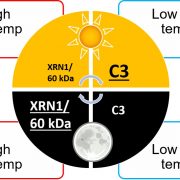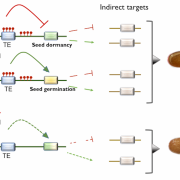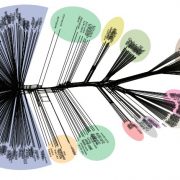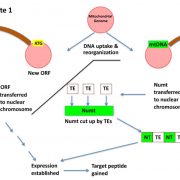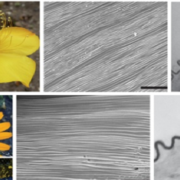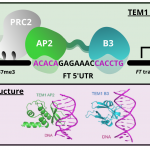Review: Evolutionary innovations driving abiotic stress tolerance in C4 grasses and cereals (Plant Cell)
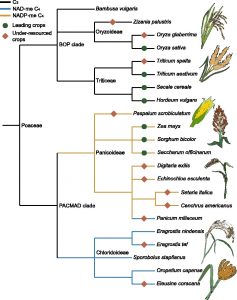 Grasses fall into two clades, the more temperate BOP clade of C3 grasses (Bambusoideae, Oryzoideae, and Pooideae subfamilies), and the more tropical PACMAD clade of C3 and C4 grasses (Panicoideae, Arundinoideae, Chloridoideae, Micrairoideae, Aristidoideae, and Danthonioideae subfamilies). This review, by Pardo and VanBuren, explores the origins of abiotic stress tolerance in the PACMAD clade, which includes important tropical crops such as sorghum, maize, sugarcane, millet, and teff. This fascinating review addresses many traits that evolved independently in grasses (such as their unique stomatal shape and Kranz anatomy) as well as those that are adaptations of those found in other plants, such as their fibrous root system. The authors explore the relationship between C4 biochemistry and anatomy and water use efficiency, and discuss factors that make members of the Chloridoideae (millet, teff) more salt and desiccation tolerant than other grasses. Finally, they discuss how these insights can be applied toward improving climate resilience in our crops. (Summary by Mary Williams @PlantTeaching) Plant Cell 10.1093/plcell/koab205
Grasses fall into two clades, the more temperate BOP clade of C3 grasses (Bambusoideae, Oryzoideae, and Pooideae subfamilies), and the more tropical PACMAD clade of C3 and C4 grasses (Panicoideae, Arundinoideae, Chloridoideae, Micrairoideae, Aristidoideae, and Danthonioideae subfamilies). This review, by Pardo and VanBuren, explores the origins of abiotic stress tolerance in the PACMAD clade, which includes important tropical crops such as sorghum, maize, sugarcane, millet, and teff. This fascinating review addresses many traits that evolved independently in grasses (such as their unique stomatal shape and Kranz anatomy) as well as those that are adaptations of those found in other plants, such as their fibrous root system. The authors explore the relationship between C4 biochemistry and anatomy and water use efficiency, and discuss factors that make members of the Chloridoideae (millet, teff) more salt and desiccation tolerant than other grasses. Finally, they discuss how these insights can be applied toward improving climate resilience in our crops. (Summary by Mary Williams @PlantTeaching) Plant Cell 10.1093/plcell/koab205


